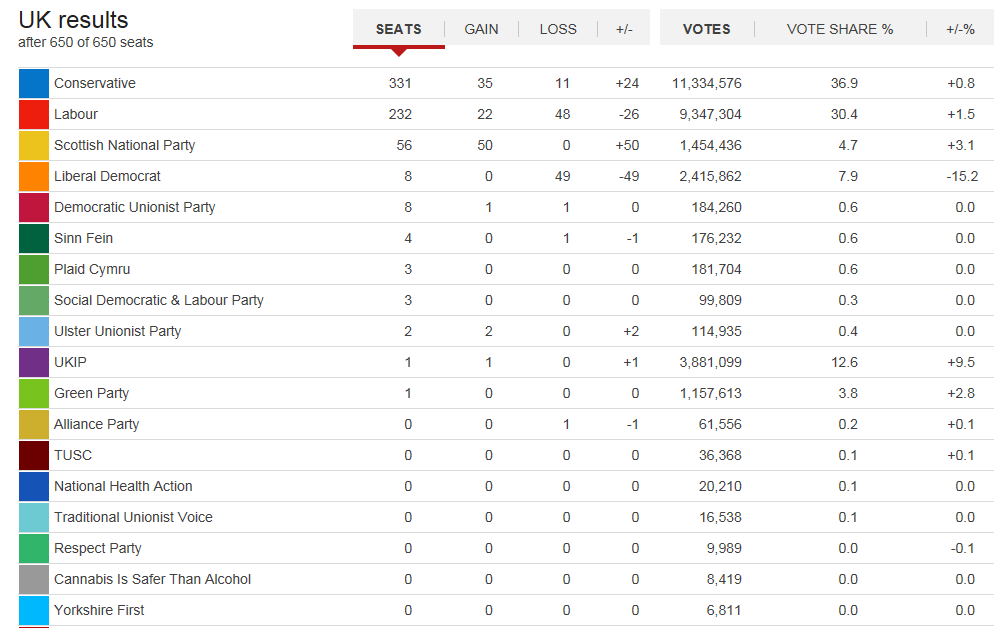Types of Representation
Types of representation
Trusteeship: the idea that representatives (MPs, for example) use their superior knowledge and experience to act for the people- they don’t just do what the people would want, instead, they try to act in their best interests, because the people may not know what is in their best interests. This has been argued to be an out-of-date way of viewing representation.
Mandate: this means ‘an instruction or command to govern’ and is sometimes used to describe the right to govern. By winning an election. A government has had its manifesto (set of policy proposals) approved by the public, so they have the right to carry out those policies. This has been argued to be a misleading way of describing representation in the UK, as most voters are unlikely to have read manifestos in detail. Once in power, there is little to stop a government from breaking or not fulfilling manifesto pledges.
Descriptive: the idea that MPs should literally represent the people, for example by being from a similar background to most of their constituents, and think in a similar way. This may lead to a representative with a very narrow interest base, however.
First-past-the-post (FPTP)
Types of electoral system
- Used in House of Commons (general) elections, and local elections in England and Wales
- Voters vote for a representative for a constituency
- Voters have one vote only
- The candidate with the most votes wins the constituency
- In the UK, whichever party wins an overall majority of constituencies can form a government
- This is a simple plurality system- whoever gets the most votes of any candidate wins. The winner does not have to get more votes than all other candidates put together
Example: 2015 General Election
Source: BBC News
__First-Past-The-Post: __Advantages
- It gives voters a clear choice between two parties with distinct programmes for government
- It establishes the constituency link between MPs and voters- this is good representation
- Winning parties can fulfil their manifesto pledges without the need to compromise in a coalition
- It allows for strong governments- governments have a healthy majority and can get things done
- It allows for stable governments- single-party governments are less likely to collapse, so provide certainty and stability
- Extremist parties are unlikely to get a foothold
First-Past-The-Post: Disadvantages
- It is not proportional- the percentage of seats won by parties does not reflect the percentage of the vote they received. This is undemocratic
- It creates lots of safe seats and wasted votes
- Governments win power with only 35-40% of the vote, so are not supported by most of the population
- It leads to few checks and balances on government power, as governments can easily pass legislation
- Power is concentrated too narrowly, and small parties do not get the level of representation their support merits
Assessment Question:
First Past the Post: How it is counted
To become an MP, a candidate simply needs the largest number of votes in their area. This is repeated in 650 constituencies across the country. As every MP will be elected with different levels of support, the proportion of seats a party gets in parliament will rarely reflect the proportion of votes the party received. Parties whose supporters are thinly spread out may get the largest number of votes in only one or two areas but might get millions across the whole country. Likewise, parties with supporters that are geographically concentrated may get fewer votes across the whole country but get the largest number of votes in more constituencies.
Features and effects
This tends to generate two large parties, as, without a geographical base, smaller parties find it harder to win seats. With a geographical base, parties that are small UK-wide can still do very well. For instance, in Scotland in 2015 the SNP won just under half the votes but won 95% of the seats providing a different view of Scottish public opinion than actually exists. As only votes that get an MP elected matter, parties need to prioritise specific voters to win seats.
First Past the Post creates safe seats, where so many of a party’s supporters live that there is no point campaigning, and marginal seats, that could change hands. Parties will design their policies to target voters in these marginal seats and spend the majority of their funds campaigning in them. However, as these seats are not necessarily representative of the rest of the country, voters in safe seat areas can feel politically neglected.
Constituency Representation
First Past the Post means that MPs can be elected on small proportions of the vote if they simply win the most votes amongst a fragmented field. In 2015 Belfast South was won with just 9,560 votes, or 24.5% of the total, a record low. It is common for MPs to be elected with less than half the support of their constituency.
Additionally, FPTP encourages tactical voting, where a seat may be contested between a candidate a voter dislikes, their favoured candidate and a candidate they like less than their favoured candidate but more than the first. If they know their favoured candidate might not win they may feel pressured to vote tactically for the other candidate in the hopes of beating the candidate they most dislike, so support may not be genuine. www.electoral-reform.org.uk
- Using the source, evaluate the view that first-past-the-post should be replaced as the voting system for UK general elections. (30 marks - 3 arguments for, 3 arguments against)
- Your answer should include: Proportions / Support / Swing / Voters / Safe / Seats / Wasted

